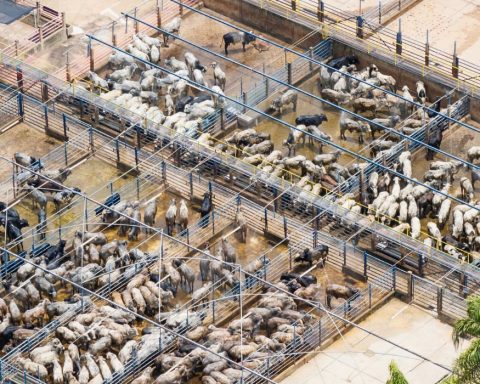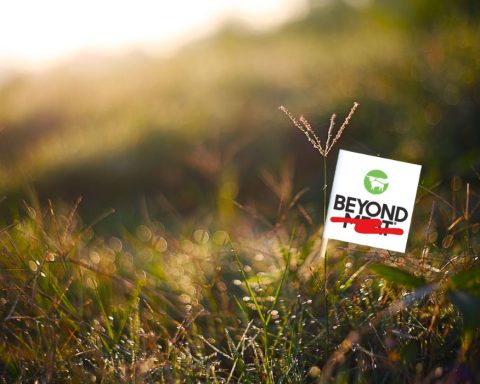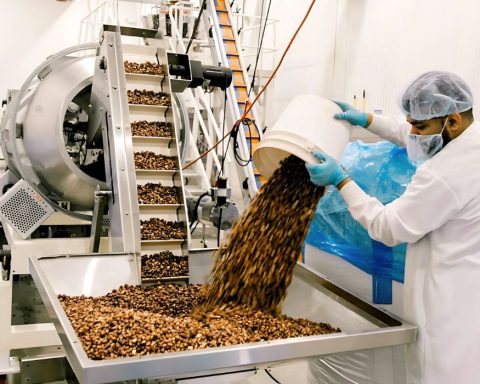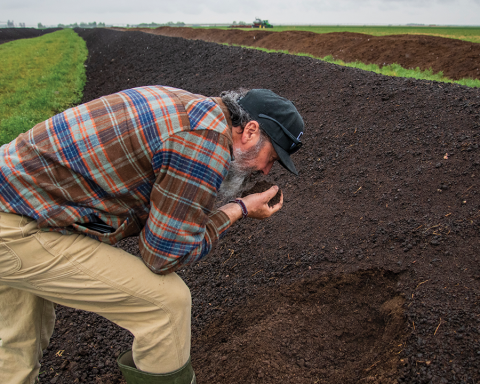In April 2024, posters began appearing around Toronto promoting May 12 as “the first annual Steal from Loblaws Day.” In the cheerful Loblaws colours – yellow, red and orange – the general public was encouraged to do what many felt the grocery giant had been doing to them over the years: rob it blind.
The resentment fuelling this campaign, for which nobody took responsibility, was widely shared. In the midst of a cost-of-living crisis, as post-pandemic food price inflation peaked, the three grocery conglomerates that control the majority of the food retail market in Canada – Loblaw, Empire (owner of Sobeys) and Metro – were turning record profits, as their executives pocketed bonuses in the millions. All that in the wake of revelations that they had been colluding to fix the price of bread over a 14-year period.
Today, as the ongoing trade war with the United States drives food prices up even further, many Canadians approach the grocery store with some combination of anxiety, dread and rage. But a small subset feels quite differently.
“Spending money on food feels like an investment to me,” says Jon Steinman, a resident of Nelson, B.C., and author of the 2019 book Grocery Story: The Promise of Food Co-ops in the Age of Grocery Giants.
Steinman is an enthusiastic participant in the cooperative food economy, which accounts for some 4% of Canada’s total grocery market, according to the Retail Council of Canada. And he believes that now, as Canadians express their patriotism in the grocery aisles, seeing their consumer habits as political choices, the food co-op’s moment may have truly come. “Many Canadians talk about the need for greater food sovereignty or security,” Steinman says, “without realizing that they could actually have ownership of the system.”
Born and raised in Toronto, Steinman was oblivious to the co-op concept – which was not even mentioned in the bachelor of commerce degree he did at the University of Guelph – until he moved to British Columbia in the early 2000s to work in the wine industry. On a stop in Nelson, a former mining town in the Selkirk Mountains, he found himself listening with interest to the local radio station. When he learned that it was run as a co-op, he began volunteering. Soon he was hosting the morning news show. Then he discovered that his favourite grocery store in town was also member-owned; he paid his $50 and joined the Kootenay Co-op. Before long, Steinman had dropped his wine plans and committed himself to Nelson’s vibrant cooperative economy.
Read more from our collective economy series
What appealed to Steinman about the Kootenay Co-op is the most distinctive feature of co-ops generally: their ability to reflect the needs and priorities of their customers, who are also their owners. If affordability is an issue, a co-op may vote – and many do – to apply all profits above a certain threshold to lowering prices. If business is booming and demand growing, it may opt to expand. If national sovereignty is under threat, it may elect to reconsider its suppliers.
So why have food co-ops not made bigger inroads into the Canadian food economy? Many living in central Canada barely have access to them (Toronto, for instance, has only two), while Western Canadians may take them for granted, forgetting that the iconic red Co-op brand in fact belongs to Federated Co-operatives Limited, the largest non-financial co-op in Canada, which operates gas stations, car washes and liquor, food and convenience stores. And misconceptions about co-ops abound. For many, the term suggests added expense and effort, or a sense that they are buying into something ideological, less profit-driven and therefore inefficient.
But consider the Swiss example. In the business-friendly banking capital of the world, 80% of the grocery market is controlled by two co-ops: Coop and Migros, respectively the 34th and 41st largest retailers in the world, according to Deloitte’s most recent ranking. Both have more than two million members – membership is free to all Swiss citizens – and play a significant and progressive role in Swiss life. It was thanks in large part to Migros that Swiss women earned the right to vote federally in 1971 – the co-op was the campaign’s largest corporate backer, advertising its support on its shopping bags – and it has, since 1957, contributed 1% of its turnover to cultural and social projects. Both Migros and Coop have been pioneers in launching organic product lines and discontinuing the use of plastic bags.
Now everyone is talking about buying Canadian, but we’ve been having that conversation for eons.
— Daniel Brunette, director of external affairs, Co-operatives and Mutuals Canada
As in Switzerland, the majority of Canada’s food co-ops grew out of agricultural co-ops: established by dairy producers in the late 19th century and Western grain farmers in the early 20th century. Then there was the more recent wave, inspired by the “Small is beautiful” economic and natural food movements of the 1970s, to which the Kootenay Co-op belongs. Frustrated by the high prices and limited selection of corporate chains, a small group of Nelson locals formed a buyers’ club, purchasing bulk staples with an emphasis on local and unprocessed foods. Today, the Kootenay Co-op, which operates out of a building on Nelson’s main drag, has more than 16,000 members and does roughly $28 million in sales annually, making it Canada’s largest independent natural foods co-op.
Beyond providing a grocery supply aligned with its membership’s values – fair labour practices, organic, Canadian – Steinman says the co-op has served as an incubator for the local food system. The soft winter wheat used in the pumpkin butter tarts he just baked, he tells me, came from the nearby Creston Valley; the grain farmers in that region had been growing for export and the mass market until the co-op approached them and offered a local customer base. Likewise, the co-op provides grants and donations to local producers and supports local cultural initiatives; overall, Steinman says, it strengthens the local economy in a way that outlives electoral cycles.
In a time of exceptional geopolitical and economic volatility, the timing does seem ripe. “Now everyone is talking about buying Canadian,” says Daniel Brunette, director of external affairs for Co-operatives and Mutuals Canada, “but we’ve been having that conversation for eons. The biggest hurdle to co-ops is the perception that they’re some kind of marginal alternative. They’re not. They’re a very well-established practice in this country. They happen whenever people come together around a common need.”
Naomi Buck is a Toronto-based writer.
The Weekly Roundup
Get all our stories in one place, every Wednesday at noon EST.






